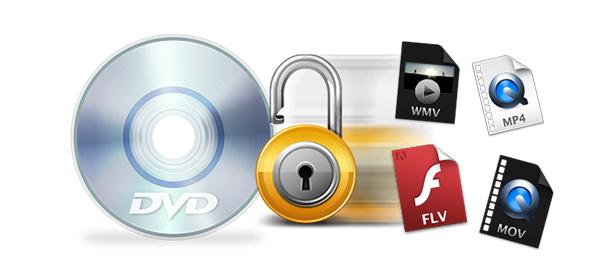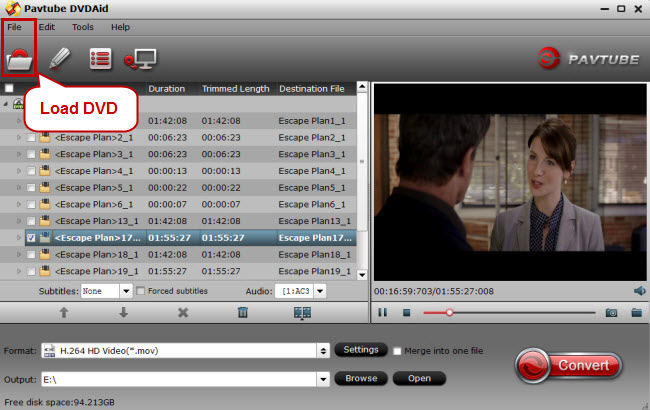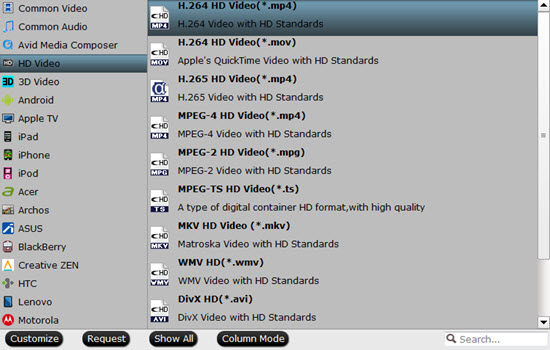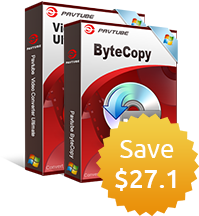The copy protection used by media distributors not only helps to prevent piracy, but also prevents you from making backup copies of your DVDs. The good news is that there are several program allow you to either circumvent or completely strip copy protection so that you can get full control over DVD that you have legally purchased. The following article will talk about different types of DVD copy protection and how to remove DVD copy protection with the best DVD Copy protection removal software.

Different types of DVD copy protection
There are three types of copy protection that are used on commercial pre-recorded DVD discs. These are Analog Protection System (APS) scrambling, Content Scramble System (CSS) encryption, and a system involving corrupted disc structure. Recordable DVD discs are also sometimes copy protected using Content Protection for Recordable Media (CPRM) encryption. The following part will illustrate these schemes in great details.
Analog Protection System (Macrovision)
The Analog Protection System, popularly known as Macrovision after the company that developed it, is a protection system that is applied to the composite analog video signal coming out of DVD players. By manipulating the signal level of the composite video, Macrovision fools the automatic gain control of most video recorders resulting in annoying shifts in color and brightness in the recorded video.
Macrovision can be defeated by passing the composite video signal through a hardware device that restores the proper video signal levels. With the demise of analog video and the widespread availability of digital decryption tools, Macrovision protection has largely become irrelevant. Macrovision Corporation renamed itself Rovi and now promotes other copy protection technologies.
Content Scramble System (CSS) Encryption
CSS is an encryption system that is the main copy protection scheme used on pre-recorded DVD discs. CSS utilizes a proprietary 40-bit cipher that is used to encrypt the data stored on the DVD disc. When the disc is inserted into a player or computer, a series of "authentication" handshake key exchanges occur between the DVD drive and the player software. At the end of the "authentication" process, the drive allows access to the encrypted DVD data and the player can use the key it has obtained to decrypt the DVD data and play the disc.
Many DVD drives have a tendency to completely lock out access to an encrypted disc until the drive has been "authenticated". In addition, many DVD drives will refuse to complete the "authentication" process and provide a decryption key if the disc and drive are not from the same region. Both of these situations can cause strange behavior and odd error messages on computer systems.
DVD Disc Corruption
After the CSS protection system was cracked, the movie industry looked for a alternative copy protection scheme that would be compatible with the large number of existing DVD players in the marketplace.
Borrowing a (failed) technique from the video game industry, they settled on a scheme in which portions of DVD discs are deliberately mangled in such a way as to render them unreadable. When the disc is played, these corrupted areas of the disc are skipped. When the disc is copied sequentially, however, these corrupted areas cause the drive to hang up and get stuck.
This copy protection scheme has been marketed under a variety of names, including ARccOS (by Sony), RipGuard (by Rovi), Disney X (by Disney), etc. For cost and convenience reasons, it is not applied to all commercial DVD releases.
DVD disc corruption is a nuisance, but most of the more sophisticated DVD copy tools can handle it. Some tools maintain a database of corrupted areas on DVD discs that contain corruption, while other tools attempt to analyze the DVD structure to find areas of the disc that are never accessed.
Content Protection for Recordable Media (CPRM)
CPRM is a copy protection scheme that is used for Secure Digital (SD) memory cards and recordable DVD discs, including DVD-R, DVD+R, DVD-RW, and DVD+RW discs. Special CPRM-compatible recordable media are required, with each disc including a unique Media ID inscribed as a bar code in the inner hub area.
When a CPRM-compliant recorder detects compatible media, it uses the unique Media ID on the disc to encrypt the data it records to the disc. The recorder will also write a block of data called the Media Key Block (MKB) which is used to decrypt the disc. If the disc is copied, the Media ID on the new disc will be different and the recorded data will not decrypt correctly.
CPRM protection has largely been restricted to the Japanese market, where it is called "Copy Guard" and used to protect broadcast HDTV programs that include a special Copy Guard flag. Japanese-market recorders that record that program are required to include CPRM protection. Depending on the Copy Guard instructions, a limited number of copies of the CPRM disc data may be permitted.
The CPRM system involves something called the Cryptomeria or C2 cipher, which uses a 56-bit key and 64 byte blocks. The majority of the cipher is published openly, but a proprietary "S-box" portion of the cipher is provided only to CPRM licensees. The licensing organization is called the 4C Entity, whose membership includes IBM, Intel, Microsoft, Panasonic and Toshiba.
A cryptanalysis of the C2 cipher was published in 2009 and CPRM was partially cracked in late 2009 using a crowd-sourced brute-force attack, and a set of decryption tools for Windows based on the key from this crack was distributed over the internet.
Best DVD Copy Protection Removal Software
When searching on the Internet, you will find that there are many free DVD Ripper software out there. However, a lot of them such as Handrake, Format Factory and VideCoder can only handle non copy protected DVD. MakeMKV can be a good solution, but it only allows you to output a large MKV file without encoding option. Other program may fail to handle the new DVD disc due to a halt on developement.
Looking for a more powerful and flexible way to bypass DVD copy protection? Pavtube DVDAid (best DVD Ripper review) is absolutely your best choice. The program can comprehensively remove up to 14 types of DVD copy protection and region codec including Region code, RCE, key2Audio, UOP, CSS, Macrovision, FluxDVD, Protect, ARccOS, AACS, BD+, ROM Mark, BD-Live, etc. It also keeps constant upgrade with perfect support for the copy protection used on the recently released DVD movies. You can use the program to rip copy protected DVD disc, Video_TS folder and IFO/ISO file to various popular file formats or device preset profile for viewing on smartphones, tablets, game consoles, smart TVs, etc. If you want to make a copy of the DVD movies for safe backup, you can use the program to make either a full disc copy with subtitle information, audio tracks and chapter information well preserved or a main movie copy without unwanted trailers, ads, comments, etc.
Other great features of Pavtube DVDAid
- Automatically select the main DVD title
- Available on both Windows and Mac (get Pavtube DVDAid for Mac) platform
- Select desired subtitle language and audio track from internal DVD movies
- Customize output profile parameters to get better output video and audio quality
- Enable forced subtitles to disable the traditional subtitles while still preserving the subtitles that translate foreign language speaking parts.
- Add external subtitle to DVD when the foreign language DVD movie do not contain any language subtitles you understand.
- Edit DVD movies by trimming unwanted parts, cropping out black bars or unwanted area, add video/image/transparent text watermark, apply special effect, change video color effect, remove/replace audio in DVD video, etc.
Step by Step to Remove Copy Protection from DVD Movies
Step 1. Import Copy-protected DVD movies.
Insert DVD disc into optical drive of your computer. Launch the best DVD copy protection removal software on your computer, on the main interface, click "File" > "Load from disc" to import copy-protected DVD. You can also add ISO image or DVD folder as target files.

Tips: Once the DVD is completely loaded, the main title will be checked automatically. From the drop-down list of "Subtitle" or "Audio" select your desired subtitle language or audio track.
Step 2. Select Output Format.
Navigate to the "Format" bar drop-down list, here, you can choose the output file format according to your own needs. You can either output a popular file format such as AVI, WMV, MP4, MKV, MOV, etc or devices (Apple, Android, Microsoft, etc) preset profile formats. Or a full disc copy or main movie copy of your DVD movies.

Step 3. Start DVD Copy Protection removing process.
Tap Browse button to set destination folder (hard drive or device) and then click right-bottom "Convert" button to start to remove DVD copy protection.
When the ripping process is completed, you will have no problem to play non-protected DVD movies on any device as you like.



